Posted by Maris on 14th Aug 2023
7 Weird But Wonderful Scottish Traditions
We look at the history of eight strange and fascinating Scottish traditions, from haggis hurling and coal hauling to sheep racing and groom blackening.
COAL CARRYING

Every summer, around noon, the bunting-draped streets of Kelty ring with the thunder and pech of runners lugging sacks of coal on their straining backs.
The Scottish Coal Race is a kilometer-long uphill race through the community from the smiddy to the school, with ladies carrying 25-kilo bags and men carrying twice that.
The marathon has been running since 1994 and is seen as a way to commemorate the Fife coalfield’s magnificent but tragic industrial heritage.
Kelty used to have 14 pits around it; today there are none. It is believed that miners would occasionally hurry home from work carrying a large lump of coal termed a “clug” or “raker” for their own use. This story serves as a sort of prop for the race.
THE BLACKENING OF THE GROOM
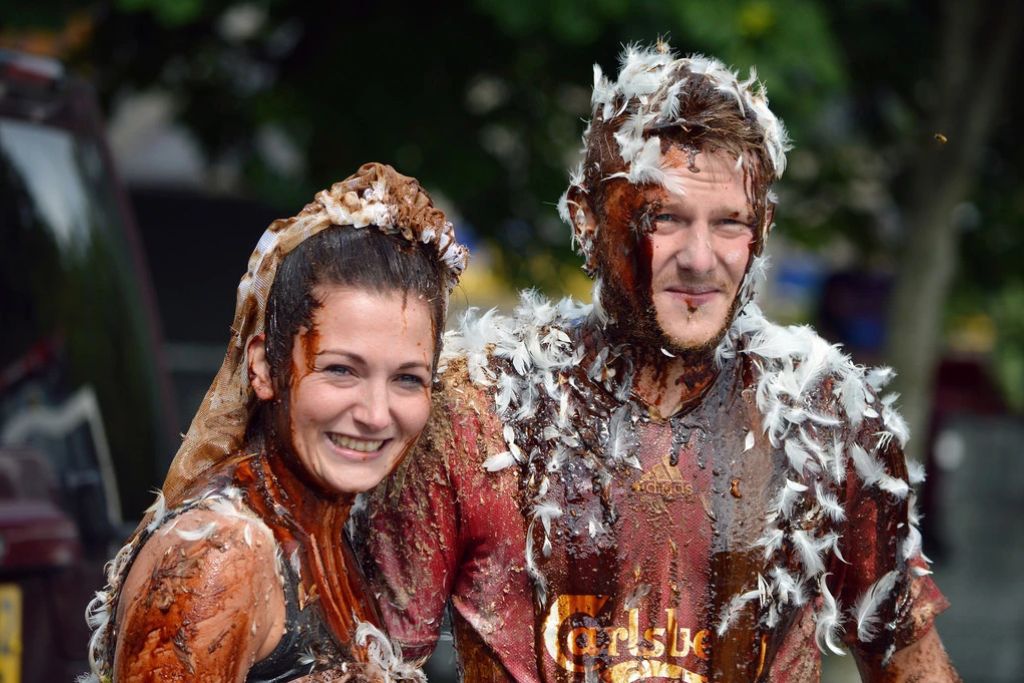
It may sound like medieval torture, but blackenings, which were formerly performed to drive off evil spirits before a marriage, are still practiced in some regions of Scotland today.
The potential bride or groom is taken by friends and coated in soot, treacle, flour, and feathers in the prenuptial ceremony, which is usually performed the day before a wedding.
In the past, the victim or victims would be thrown onto a cart and paraded through the town, but nowadays, when Blackenings are carried out, they are placed on top of a pick-up truck and driven around to the sound of horns and claxons.
The victim is frequently rendered incompetent by drinking and will most certainly end up tied to a lamppost or tossed into the shallow sea.
Blackenings are related to the Penny Bridal custom, in which donations are made to cover the expense of the bridal feast.
The Bride would be led to a room where guests would bathe her feet in water containing the wedding ring of a long-married woman.
The bride’s friends would then seize the bridegroom and blacken his legs with coal.
HAGGIS HURLING
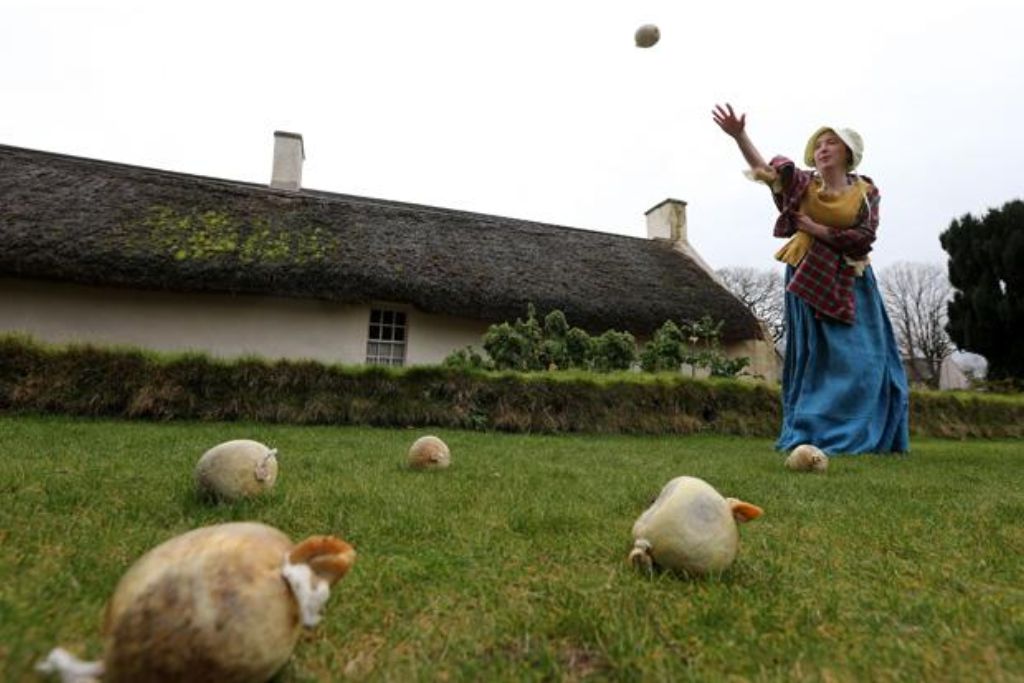
While the original haggis recipe may have been devised by the English, Vikings, Romans, or even ancient Greeks, the Scots have gone on to embrace, perfect, and make this beautiful delicacy famous worldwide.
One Scottish tradition involves chucking the haggis rather than eating it.
Haggis throwing has grown in popularity in recent decades.
It all started in 1977, when Irishman Robin Dunseath put an advertisement in a national newspaper inviting people to compete in The World Haggis Hurling Competition.
Mr Dunseath claimed to be resurrecting a 17th-century practice in which women in Auchnaclory flung haggis across the River Dromach to their husbands working in the fields in order to save time that would otherwise be spent traveling to a crossing place.
To avoid having dirt mixed up with their dinner, the men would have to catch the haggis in their kilts.
Hundreds of people replied, and the sport quickly expanded around the rest of the world, with competitions springing up in nations with migration links to Scotland, such as the United States, Canada, and Australia.
Tartan Plaid offers a special collection. Discover and shop now with 15% off code: TARTANBLOG15 (use code at check out)
BURNING THE CLAVIE
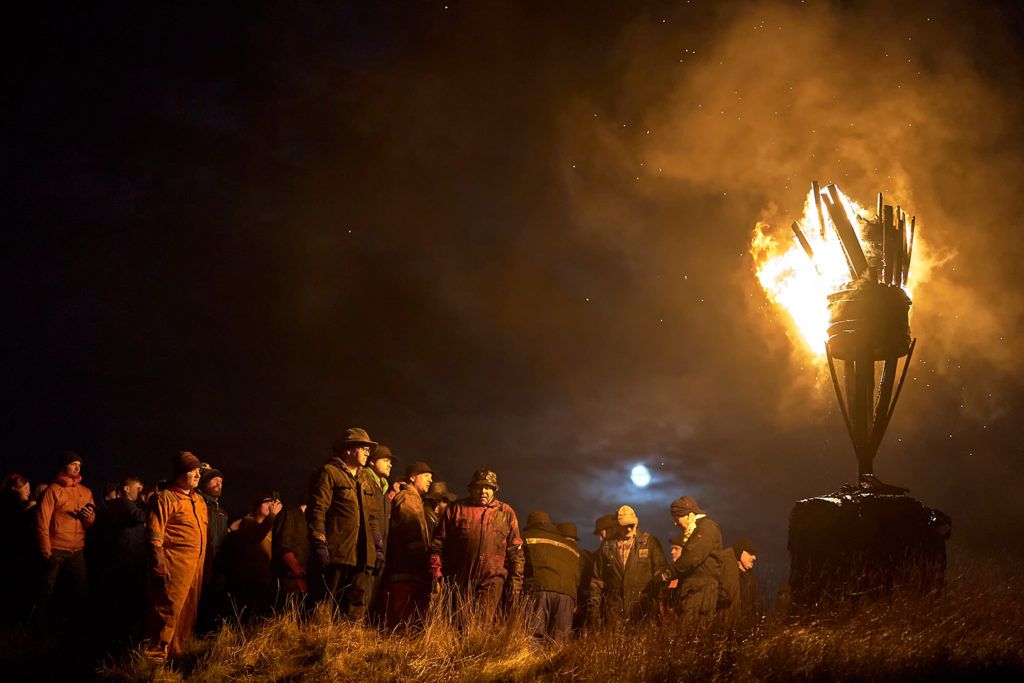
Not everyone did when Britain switched from the Julian to the Gregorian calendar in 1752.
Burghead was a little slower than the rest of the UK, and the small town in Morayshire still celebrates New Year’s Day on January 10th.
What they lack in punctuality, they make up for in effort, hosting one of the few fire rites reported to have survived the Catholic Church’s assault on Pagan fire rituals.
The Clavie, a hooped barrel filled with old fragments of tar and wood, is used in the Burning of the Clavie. It’s pounded onto a pole with a specially made nail that doesn’t require iron (possibly implying a link to primitive magic?).
Ten men take turns carrying the burning Clavie clockwise through the streets, pausing to offer smoldering embers to residences. Locals collect the burning chunks to stoke their home fires, and some ashe remains are even wrapped and mailed to family. They are presumably extinguished first, but no one is saying.
Following a municipal parade, the Clavie is affixed to a special pillar built on adjacent Doorie Hill. As people fight for the glowing cinders for good luck, more fire is poured before the fiery embers are dispersed down the mountain.
Is it a Pictish, Roman, Celtish, or Norse tradition to burn the Clavie? Nobody knows for sure. By the 17th century, it had evolved into a cleansing rite to purge the evil eye from the fishing fleet, and it was most likely performed in numerous places across the north-east of Scotland. It was condemned as “superstitious, idolatrous, and heathen” by the Presbyterian churches, and a legislation was passed against Clavies in 1704.
A spot in the Clavie “team” is now highly sought and passed down through the family.
REDDING
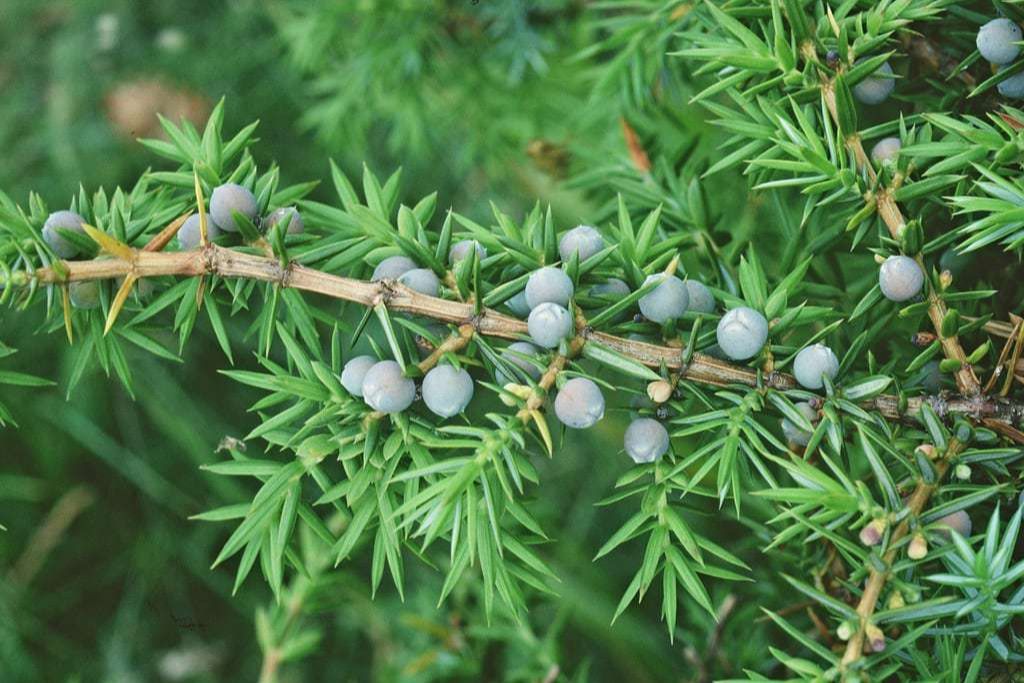
Redding is essentially the New Year’s Eve equivalent of a spring cleaning.
Households must be spotless by the time the bells ring, so that the New Year can be welcomed with a blank slate (or, in this case, a clean house).
All flames were cleaned of ashes in previous generations so that new ones may be lit. The ritual also included the burning of juniper to ward off sickness and evil spirits.
THE KIRKWALL BA’

If you believe that football is no longer what it once was – that it is “a man’s game” – you won’t find a more clear distillation of this than at the Kirkwall Ba’.
At 1pm on New Year’s Day (though it is also played on Christmas Day), local men congregate to play a chaotic and vicious version of the beautiful game with a cork-stuffed leather ball.
The playing area is much larger – the entire town of Kirkwall virtually becomes the pitch, making finding the ba’ at times difficult.
MOFFAT SHEEP RACE
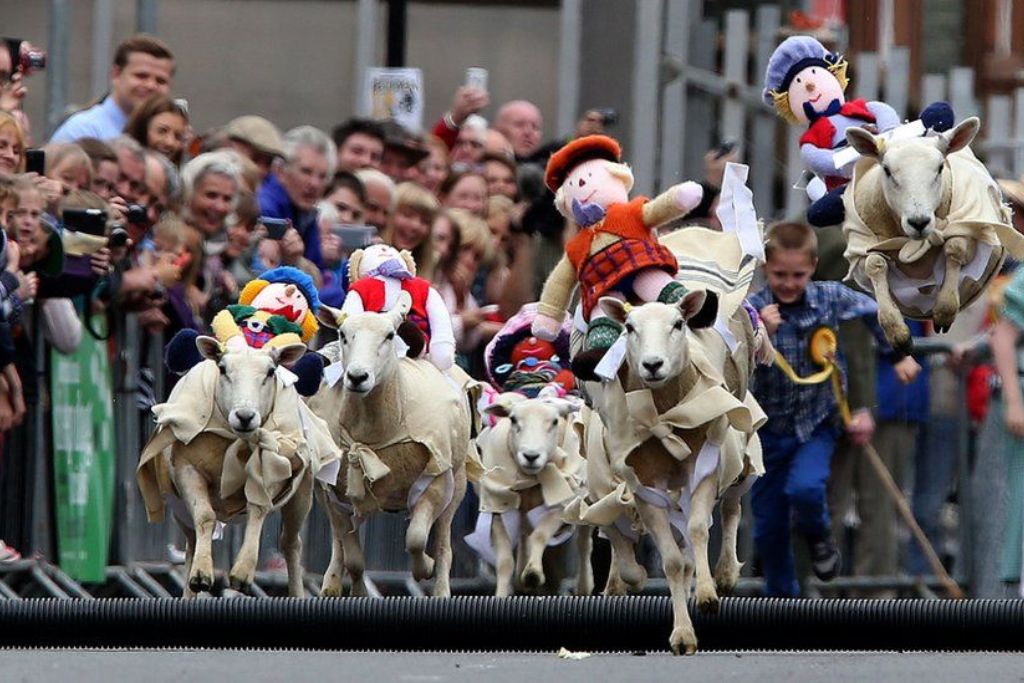
It may not yet compete with Pamplona, where visitors flock to see the running of the bulls, but Moffat, more known for toffee, hosts its own equivalent every August when hundreds assemble to see the annual sheep race.
Sheep run along the town’s main street while carrying a fake jockey made of wool on their backs and navigating a series of hurdles.
In 2011, the spa town hosted what is believed to be Scotland’s first such event on its main street.


